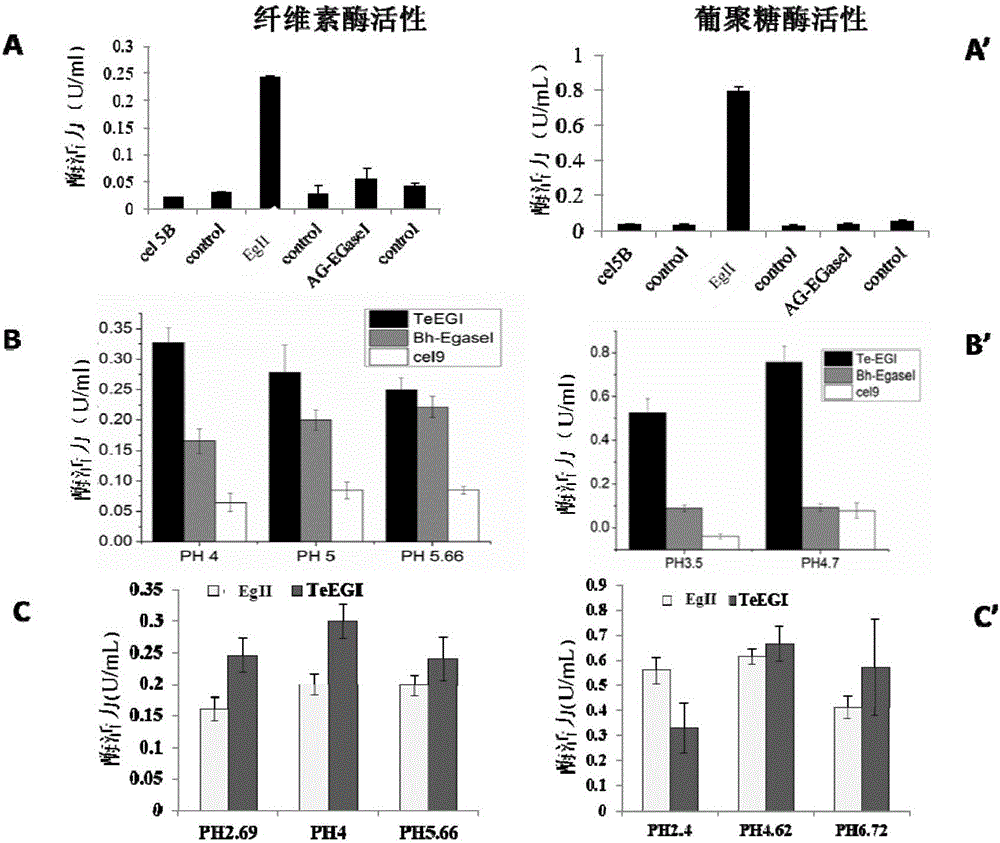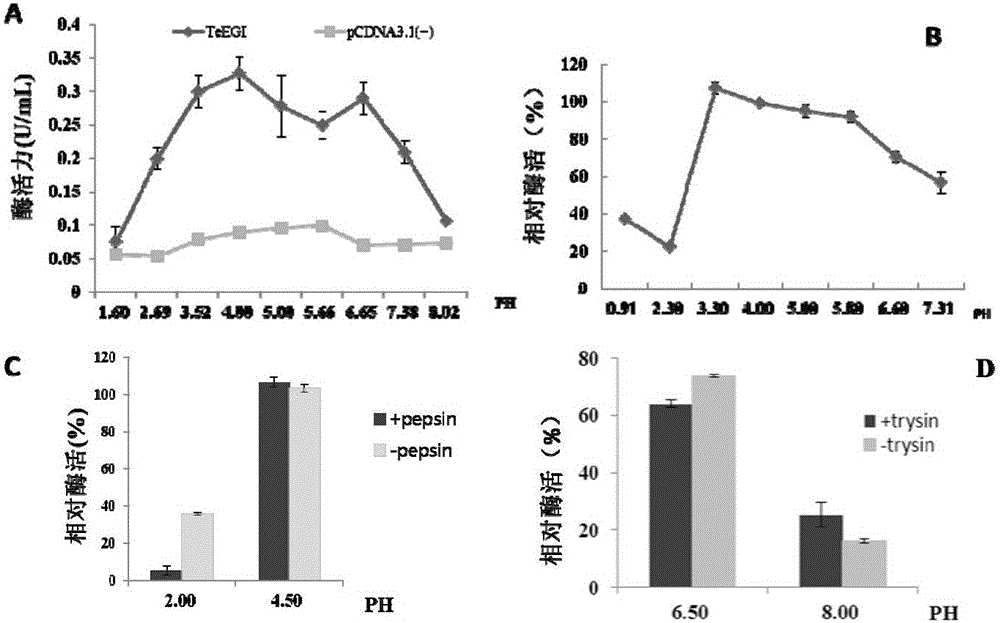Polycistron, vector for specific expression of polycistron through salivary glands and construction method thereof
A polycistronic and construction method technology, applied in vectors, nucleic acid vectors, botanical equipment and methods, etc., can solve problems such as heavy workload, threats to genetic stability, difficult aggregation and application, etc., to broaden the selection And the effect of developing, improving feed utilization rate and reducing pollution discharge
- Summary
- Abstract
- Description
- Claims
- Application Information
AI Technical Summary
Problems solved by technology
Method used
Image
Examples
Embodiment 1
[0052] Example 1 Construction method of polycistronic eukaryotic expression vector for co-expression of multiple genes
[0053] Include the following specific steps:
[0054] 1. Codon optimization of candidate genes and construction of eukaryotic expression vectors
[0055] 1.1. Candidate gene selection
[0056] According to the literature reports and the reported activities and characteristics of candidate genes, the following genes were screened in this example for transformation and verification of animal cell expression adaptability.
[0057] Candidate cellulase genes: Ag-egaseI gene (Lee et al, 2004) and Bh-EgaseI gene (Mei et al, 2016) from long beetle, Cel5B gene from filamentous fungus (Kim et al, 2012) , the Cel9 gene from Clostridium (Zhang et al, 2010), the EgII gene from Trichoderma reesei (Trichoderma reesei) (Akbarzadeh et al, 2014), the TeEGI gene from crickets (Kim et al, 2008)
[0058] Candidate xylan genes: PenXyl gene from Penicillium (Liu et al, 201...
Embodiment 2
[0098] Example 2 Salivary Gland-Specific Expression PXAT Vector Construction
[0099] The salivary gland-specific expression vector pPB-mPSP-neoGFP is a patent protection vector of our unit (patent number: ZL201310343067.0).
[0100] Vector construction includes the following steps:
[0101] First design infusion-F and infusion-R (see Table 4), using pCD-PXAT as a template, using Max DNA Polymerase was used for PCR reaction. Reaction program: 98°C pre-denaturation for 10s, 98°C denaturation for 10s, 68°C annealing and extension for 4min, 33 cycles, amplified product infu-PXAT end and linearized pPB-mPSP-neoGFP vector (AscI Restriction restriction) has a 15bp homologous sequence at the end; then use In-FusionTM HD Cloning Kits to clone infusion-PXAT to the Asc I restriction fragment of pPB-mPSP-neoGFP to construct pPB-mPSP-PXAT-neoGFP, the reaction system is shown in Table 5, Build results see Figure 16 , the nucleotide sequence is shown in SEQ ID No:3.
[0102] Table 4 C...
PUM
 Login to View More
Login to View More Abstract
Description
Claims
Application Information
 Login to View More
Login to View More - R&D
- Intellectual Property
- Life Sciences
- Materials
- Tech Scout
- Unparalleled Data Quality
- Higher Quality Content
- 60% Fewer Hallucinations
Browse by: Latest US Patents, China's latest patents, Technical Efficacy Thesaurus, Application Domain, Technology Topic, Popular Technical Reports.
© 2025 PatSnap. All rights reserved.Legal|Privacy policy|Modern Slavery Act Transparency Statement|Sitemap|About US| Contact US: help@patsnap.com



